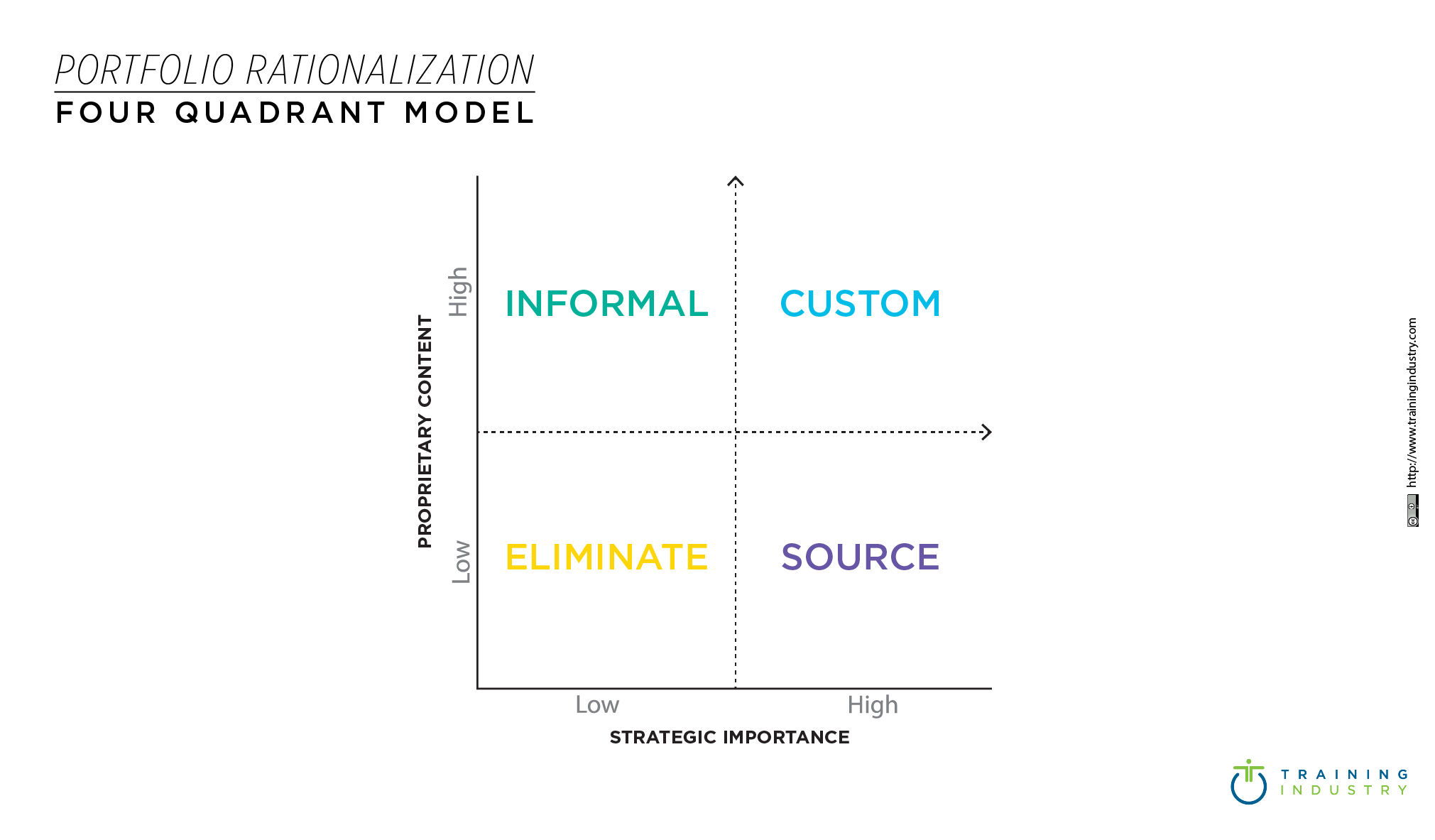DEFINITION
The Portfolio Rationalization Four Quadrant Model is designed to help training organizations determine which courses are relevant and aligned to their training needs and which courses should be avoided or eliminated.
OVERVIEW
The Portfolio Rationalization Four Quadrant Model is a tool for evaluating a training organization’s portfolio based on two critical factors: the level of proprietary information contained within the course, and the strategic importance the course plays to the organization’s objectives (strategic alignment).
Evaluation Levels
Proprietary Information
Each course is rated on a 0 to 10 scale based on the amount of proprietary information contained within the course; 0 when there is no proprietary information in the course (also called off-the-shelf courseware), and 10 when the course is completely made up of proprietary information.
Strategic Importance
Each course is then rated on a 0 to 10 scale based on the perceived strategic importance of the course to the organization’s objectives; 0 when the course has no strategic importance to the corporate objectives, or 10 when the course is strategically critical to the corporate objectives.
USES
The combined ratings, shown on an X/Y scale, will determine in which quadrant a course should be placed. This will allow learning leaders to decide whether a course should be eliminated or whether it is crucial to the training organization.
Each quadrant is defined below:
Quadrant 1: High Level of Proprietary Content and High Strategic Importance
Scores of 5-10 in Proprietary Information and 5-10 in Strategic Importance mean that a course contains a high level of proprietary information and is strategically important to the business. Courses that fall in Quadrant 1 are considered critical to the business, and should be delivered by subject matter experts (SMEs) from within the organization.
Quadrant 2: High Strategic Importance and Low Proprietary Significance
Scores of 5-10 in Strategic Importance and 0-5 in the level of Proprietary Information contained within the course, fall into Quadrant 2. Courses that fall in Quadrant 2 are considered strategically important to the business but contain little to no proprietary information. This means that the content is sourceable from third-party suppliers, but the course must be offered because it is critical for meeting corporate objectives.
Quadrant 3: Low Strategic Importance and High Proprietary Significance
Scores of 0-5 in Strategic Importance and 5-10 in the level of Proprietary Information define courses in Quadrant 3. Courses in Quadrant 3 are considered less important to the business but contain a high degree of proprietary intelligence; meaning that the content is not sourceable from other suppliers because of the level of proprietary information, but may not be crucial to the organization’s objectives. Quadrant 3 courses are targets for elimination or avoidance.
Quadrant 4: Low Strategic Importance and Low Proprietary Significance
Scores of 0-5 in Strategic Importance and 0-5 in the amount of Proprietary Information fall into Quadrant 4. Courses in Quadrant 4 are considered unessential and should not be part of the organization’s budget or portfolio.
Related Content:

